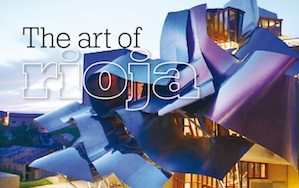Marques de Riscal’s general sales manager José Luis Muguiro says he estimates 70% of his wines will be exported in 2012. This figure was 60% in 2011.
He says this is partly due to financial problems in Spain but also because of export inroads that have been forged by the company.
“I have been going to Japan for 25 years now and our wine is now in Mongolia and Indonesia.”
Trusty reputation
Richard Grant, international division director of Hijos de Antonio Barceló, a winery group which includes Bodegas Palacio in Rioja, says the trusty reputation of brand Rioja has helped grow export figures.
He says: “Over the past two years we’ve seen exports of Glorioso crianza rise in the key markets of the US, Switzerland, Germany and the UK. The Rioja ‘brand’ has great strength in these countries and in times of economic uncertainty consumers tend to play it safe and go for brands or regions they recognise rather than try something new – choosing the value ranges of crianza or cosecha wines, accounting for the growth of exports of young and crianza Rioja wines to Germany over the past year.
“To take advantage of opportunities for Rioja wines that offer value for money in these mature markets, we’re launching a range of entry-level Riojas under the Castillo Rioja label – a historic labelling of Bodegas Palacio which was first launched in 1916 in honour of the medieval fortifications of Laguardia, the capital of the Rioja Alavesa region where Bodegas Palacio is located.”
Bodegas Palacio is not the only one looking at the value end of the market. Marques de Riscal is also rolling out an entry-level crianza, which is about two-thirds the price of its flagship reserva. Marques de Arienzo has sold about 1,000 cases since it started in 2011.
“It has been booming in Asia,” says Muguiro. “It is in Singapore, Germany and the US and we’re about to launch it in the UK.” It will be priced £8.37 with distributor Enotria.
The UK market should be ripe to receive the cheaper wine, as 40% of Rioja sales in the UK are actually “sin crianza”, meaning wines that have not been aged to crianza level, 23% are crianza, 34% reserva and 3% of exports to the UK are gran reserva (Rioja Exporters Group stats to April 2012). This is actually very close to how the global exports of Rioja shake down: of 41% sin crianza, 27% crianza, 27% reserva and 4% gran reserva.
Also at the value end of the scale, Pernod Ricard took a bold move earlier this year to rebadge its Campo Viejo Crianza as Campo Viejo 100% Tempranillo in the UK. The company claims the move was well received by consumers.
Simon Thomas, deputy managing director, wine, Pernod Ricard UK, says: “Our research tells us grape variety is consumers’ number one buying criteria, with 69% of wine drinkers considering grape variety important, or very important, in their decision-making process. We’re enabling retailers to tap into this opportunity with a premium-quality wine showcasing the best of the Tempranillo grape, which our research has shown to score better overall than Campo Viejo crianza on every measure, including purchase intent.”




